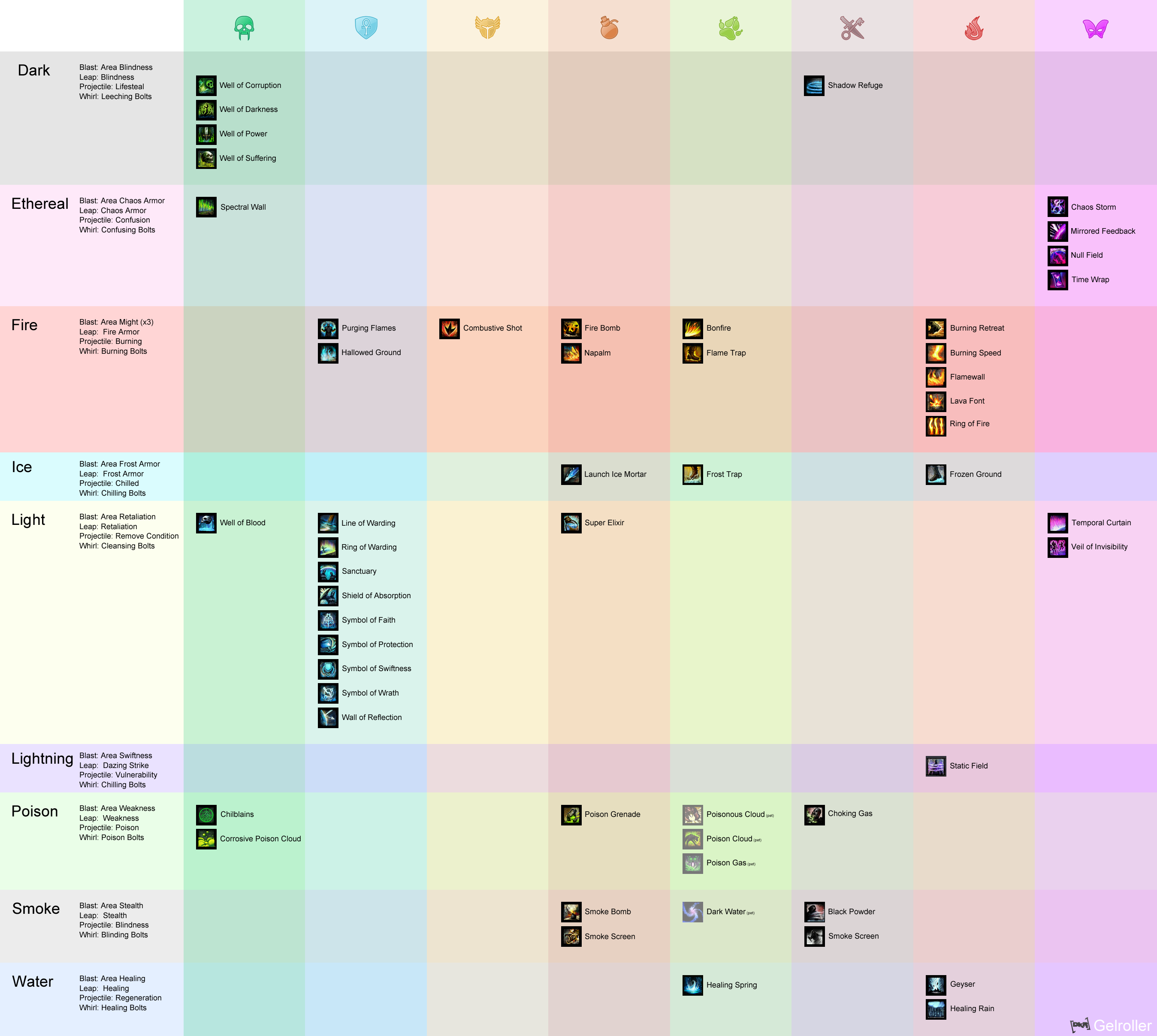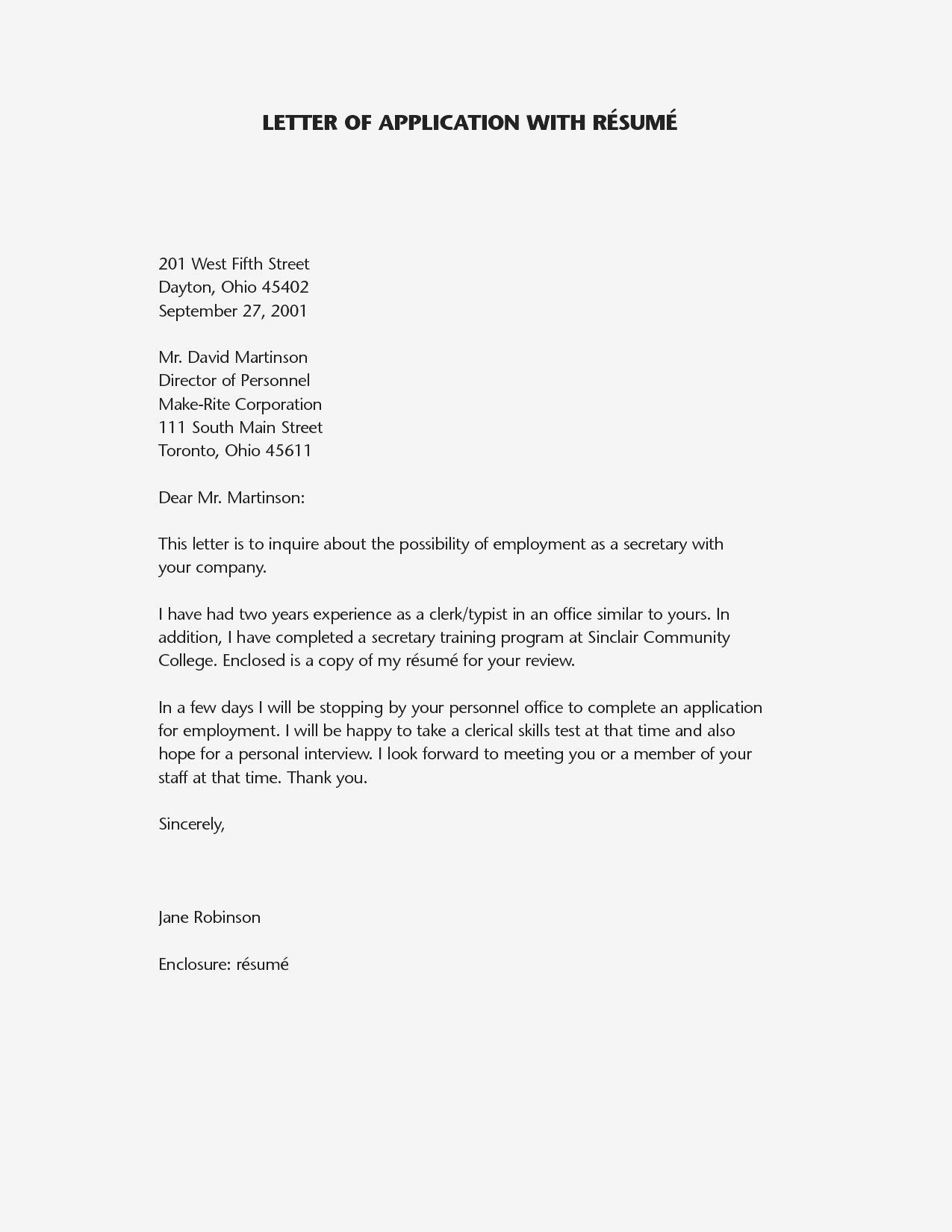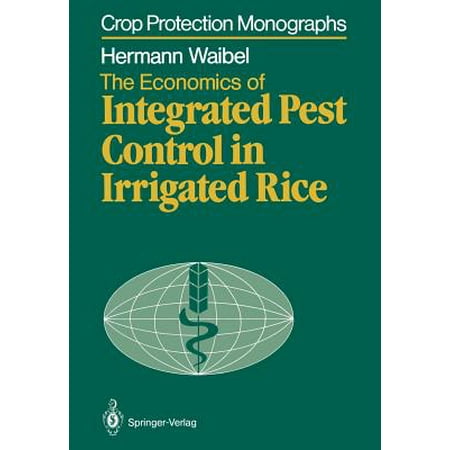
(PDF) Assessment of Corn Farmer’s Knowledge and Awareness This paper discusses the impact of integrated pest management (IPM) technology on onion farmers in the Philippines. Onions are one of the most important vegetable crops in the Philippines, with pests representing a major production constraint.Overall, the paper finds that reduced pesticide use as a result of the onion IPM project resulted in health-related, environmental, and economic benefits
Philippines Inclusive Partnerships for Agricultural
Republic of the Philippines. Integrated Pest Management (IPM) in rice is in its formulation stages in South and Southeast Asia, although several programs have been initiated. Resistant rice varieties and chemical pesticides have been the major tactics with almost no attention given to the value of indigenous natural enemies (predators, parasites and entomopathogens)., The resultant Integrated Pest Management for Citrus DVD set is accompanied by written learning material - learner study guides, learning aids and other handy resources - for scouts and staff working in citrus pest control and management. All individual written transcripts (listed titles below) are downloadable in PDF format from the CRW website..
Integrated Pest Management (IPM) is an environmentally friendly, common sense approach to controlling pests. The IPM principles and benefits described below apply to any type of structure and landscaping. On this page: Principles of IPM. Benefits of IPM. Integrated Pest Management for eggplant fruit and shoot borer (Leucinodes orbonalis) in south and southeast Asia: Past, Present and Future R. Srinivasan ABSTRACT The integrated pest management (IPM) strategy for the control of eggplant fruit and shoot borer (EFSB) consists
Economic analysis of environmental benefits of integrated pest management: a Philippine case study This paper provides an approach to evaluate a broad set of such benefits for a vegetable program in the Philippines. Assessments were made of (1) IPM-induced reduction in environmental risks posed by pesticides in onion production in the Integrated Pest Management Collaborative Research Support Program (IPM CRSP) Annual Workplan for Year Ten (September 29, 2002 to September 28, 2003) Final Version – September 2002 Management Entity Office of International Research and Development (OIRD) Outreach Division – Office of the University Provost Virginia Tech 1060 Litton Reaves Hall
Integrated pest management (IPM) is an environmentally friendly technology. IPM is a multifaceted approach to pest management that seeks to minimize negative impacts on the environment. This technique is an important step towards providing healthy, viable food for a growing global population. The focus of this study was to examine the impact of integrated pest management in a rice agroecosystem. Development and implementation of IPM 253 Integrated pest management of diamondback moth: The Philippine highlands’ experience Jocelyn E. Eusebio1 and Belen Morallo-Rejesus2 1Crops Research Division, Philippine Council for Agriculture, Forestry and Natural Resources Research and Development (PCARRD), Los Banos, Laguna, Philippines.
Integrated Pest Management for eggplant fruit and shoot borer (Leucinodes orbonalis) in south and southeast Asia: Past, Present and Future R. Srinivasan ABSTRACT The integrated pest management (IPM) strategy for the control of eggplant fruit and shoot borer (EFSB) consists 6 The Farmers' Handbook, "Near The House - 1" Chapter 9 - Integrated Pest Management 7 3. Fencing Without a fence, many types of pest can get on to the land and damage crops. So a fence is very important. The most beneficial type of fence is a living or green fence, or hedge.
2008/10/03 · Integrated pest management. Practised or not? A case among the upland swidden-based farmers in Apayao Subprovince, Philippines. Paper presented at Workshop on Integrated Pest Management and Integrated Nutrient Management in Rice, IRRI, Los Banos, July 28–29, 1987. Economic analysis of environmental benefits of integrated pest management: a Philippine case study Leah C.M. Cuynoa·*, George W. Norton b,l, Agnes Rolac a Northern Economics, INC., 880 H St., Suite 210, Anchorage, AK 99501, USA b Department of Agricultural and Applied Economics, Virginia Tech, Blacksburg, VA 24061, USA
Development and implementation of IPM 253 Integrated pest management of diamondback moth: The Philippine highlands’ experience Jocelyn E. Eusebio1 and Belen Morallo-Rejesus2 1Crops Research Division, Philippine Council for Agriculture, Forestry and Natural Resources Research and Development (PCARRD), Los Banos, Laguna, Philippines. Development and implementation of IPM 253 Integrated pest management of diamondback moth: The Philippine highlands’ experience Jocelyn E. Eusebio1 and Belen Morallo-Rejesus2 1Crops Research Division, Philippine Council for Agriculture, Forestry and Natural Resources Research and Development (PCARRD), Los Banos, Laguna, Philippines.
Social Capital and Diffusion of Integrated Pest Management Technology: A Case Study in Central Luzon, Philippines1 Florencia G. Palis2, Stephen Morin 2, 3, and Mahabub Hossain2 Introduction Social capital is a concept that can be utilized in any delivery approaches for the efficient transfer of … Philippine Master Plan for Climate Resilient Forestry Development. iii. 7. Carbon Benefits of the Philippine Master Plan for Climate Resilient Forestry Development 147 Annex 3 Ancestral Domain Areas in the Philippines (in Hectares) 168 . IPM Integrated Pest Management . IPRA Indigenous People’s Rights Act. IRR Internal Rate of Return .
Integrated Pest Management (IPM) IPM is a combination of common sense and scientific principles. It's a way of thinking about pest management that values: Using knowledge about the pest's habits, life cycle, needs and dislikes Using the least toxic methods first, up to and including pesticides Integrated Pest Management Collaborative Research Support Program (IPM CRSP) Annual Workplan for Year Ten (September 29, 2002 to September 28, 2003) Final Version – September 2002 Management Entity Office of International Research and Development (OIRD) Outreach Division – Office of the University Provost Virginia Tech 1060 Litton Reaves Hall
Management of the Pest The Philippines employs Integrated Pest Management with emphasis on biological control and none use of pesticide against the Malayan Rice Black bug. Since the outbreaks in Mindanao, lesson learned that pesticide is not a good management option for the pest. Through the KASAKALIKASAN, the IPM Article (PDF Available) Consequently, the European Union requires the application of eight principles (P) of Integrated Pest Management that fit within sustainable farm management. Here, we
Integrated Pest Management for eggplant fruit and shoot borer (Leucinodes orbonalis) in south and southeast Asia: Past, Present and Future R. Srinivasan ABSTRACT The integrated pest management (IPM) strategy for the control of eggplant fruit and shoot borer (EFSB) consists 2008/10/03 · Integrated pest management. Practised or not? A case among the upland swidden-based farmers in Apayao Subprovince, Philippines. Paper presented at Workshop on Integrated Pest Management and Integrated Nutrient Management in Rice, IRRI, Los Banos, July 28–29, 1987.
6 The Farmers' Handbook, "Near The House - 1" Chapter 9 - Integrated Pest Management 7 3. Fencing Without a fence, many types of pest can get on to the land and damage crops. So a fence is very important. The most beneficial type of fence is a living or green fence, or hedge. integrated pest management in rice pdf We conclude that pest management in tropical irrigated rice should be based on the. Extensive review of the role of biodiversity in rice pest management.and extreme caution should be used when controlling insects in rice fields which are near crawfish ponds. The first step in effective integrated pest
PHILIPPINE MASTER PLAN FOR CLIMATE RESILIENT FORESTRY
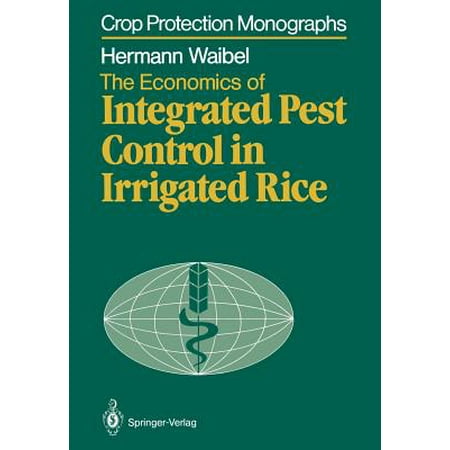
Pesticides rice productivity and farmers’ health. Integrated Pest Management (IPM) in rice is in its formulation stages in South and Southeast Asia, although several programs have been initiated. Resistant rice varieties and chemical pesticides have been the major tactics with almost no attention given to the value of indigenous natural enemies (predators, parasites and entomopathogens)., 2015/03/05 · Integrated Pest Management (IPM) is a leading complement and alternative to synthetic pesticides and a form of sustainable intensification with particular importance for tropical smallholders. Global pesticide use has grown over the past 20 years to 3.5 billion kg/year, amounting to a global market worth $45 billion..
Comparative Study of Integrated Pest Management and. Economic analysis of environmental benefits of integrated pest management: a Philippine case study This paper provides an approach to evaluate a broad set of such benefits for a vegetable program in the Philippines. Assessments were made of (1) IPM-induced reduction in environmental risks posed by pesticides in onion production in the, Integrated Pest Management- In 1967 the term IPM was introduced by R.F. Smith and R. van den Bosch. The term IPM was formalized by the US National Academy of Sciences in 1969. IPM was adopted as policy by various world governments during the 70's and 80's, including the USA (1972).
(PDF) Assessment of Corn Farmer’s Knowledge and Awareness

Rice pest management pdf WordPress.com. Integrated Pest Management Collaborative Research Support Program (IPM CRSP) Annual Workplan for Year Ten (September 29, 2002 to September 28, 2003) Final Version – September 2002 Management Entity Office of International Research and Development (OIRD) Outreach Division – Office of the University Provost Virginia Tech 1060 Litton Reaves Hall https://pam.wikipedia.org/wiki/Universidad_ning_Pilipinas,_Los_Ba%C3%B1os This paper discusses the impact of integrated pest management (IPM) technology on onion farmers in the Philippines. Onions are one of the most important vegetable crops in the Philippines, with pests representing a major production constraint.Overall, the paper finds that reduced pesticide use as a result of the onion IPM project resulted in health-related, environmental, and economic benefits.
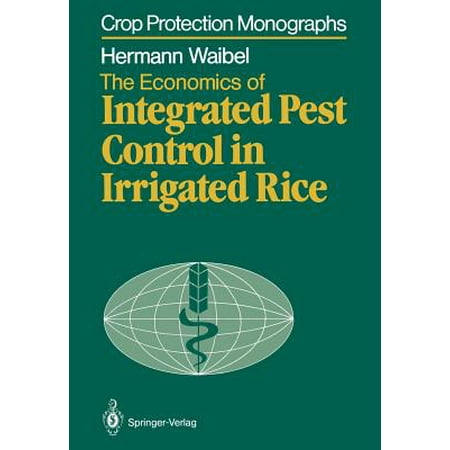
The book deals with the present state and problems of integrated pest management as relating to stakeholder acceptance of IPM and how integrated pest management can become a sustainable practice. The discussions include using less pesticides and the possibility of eliminating pesticides from Integrated Pest Management (IPM) IPM is a combination of common sense and scientific principles. It's a way of thinking about pest management that values: Using knowledge about the pest's habits, life cycle, needs and dislikes Using the least toxic methods first, up to and including pesticides
Philippine Master Plan for Climate Resilient Forestry Development. iii. 7. Carbon Benefits of the Philippine Master Plan for Climate Resilient Forestry Development 147 Annex 3 Ancestral Domain Areas in the Philippines (in Hectares) 168 . IPM Integrated Pest Management . IPRA Indigenous People’s Rights Act. IRR Internal Rate of Return . Management of the Pest The Philippines employs Integrated Pest Management with emphasis on biological control and none use of pesticide against the Malayan Rice Black bug. Since the outbreaks in Mindanao, lesson learned that pesticide is not a good management option for the pest. Through the KASAKALIKASAN, the IPM
2018/11/08В В· What is Integrated Pest Management (IPM)? Integrated Pest Management (IPM) is an ecosystem-based strategy that focuses on long-term prevention of pests or their damage through a combination of techniques such as biological control, habitat manipulation, modification of cultural practices, and use of resistant varieties. Philippines - Inclusive Partnerships for Agricultural Competitiveness Project : environmental assessment : Integrated pest management framework (English) Abstract The Inclusive Partnerships for Agricultural Competitiveness Project (IPAC) basically aims to enhance access to markets and competitiveness of ARCs smallholder farmers and landless
Integrated Pest Management (IPM) IPM is a combination of common sense and scientific principles. It's a way of thinking about pest management that values: Using knowledge about the pest's habits, life cycle, needs and dislikes Using the least toxic methods first, up to and including pesticides Integrated Pest Management- In 1967 the term IPM was introduced by R.F. Smith and R. van den Bosch. The term IPM was formalized by the US National Academy of Sciences in 1969. IPM was adopted as policy by various world governments during the 70's and 80's, including the USA (1972)
PhiliPPines cOntext In this brief, pesticide use and management in the Philippines is featured, as an indication of where further attention is needed. In the Philippines, IPM was adopted as the national crop protection policy and total use of pesticides drastically decreased from 1990 to 2006. But in recent years a majority of farmers The resultant Integrated Pest Management for Citrus DVD set is accompanied by written learning material - learner study guides, learning aids and other handy resources - for scouts and staff working in citrus pest control and management. All individual written transcripts (listed titles below) are downloadable in PDF format from the CRW website.
Abstract: A survey study was carried out to assess the knowledge and awareness level in Integrated Pest Management (IPM) technology and concepts among corn farmers in Alfonso Lista in the Province of Ifugao Philippines. Fifteen barangays constituting 2008/10/03 · Integrated pest management. Practised or not? A case among the upland swidden-based farmers in Apayao Subprovince, Philippines. Paper presented at Workshop on Integrated Pest Management and Integrated Nutrient Management in Rice, IRRI, Los Banos, July 28–29, 1987.
Economic analysis of environmental benefits of integrated pest management: a Philippine case study This paper provides an approach to evaluate a broad set of such benefits for a vegetable program in the Philippines. Assessments were made of (1) IPM-induced reduction in environmental risks posed by pesticides in onion production in the The book deals with the present state and problems of integrated pest management as relating to stakeholder acceptance of IPM and how integrated pest management can become a sustainable practice. The discussions include using less pesticides and the possibility of eliminating pesticides from
Abstract: This study examines the impact of Integrated Pest Management-Farmer Field School (IPM-FFS) programs on groundnut production in Ghana. The program was conducted in the groundnut regions of Ghana with the goal to improve groundnut agriculture through the dissemination of information and technology to the producers. This article comprehensively examines the impact of integrated pest management‐farmer field school (IPM‐FFS) on yield, insecticide expenditures, labor expenditures, herbicide expenditures, fertilizer expenditures, and profit, based on data from onion producers in the Philippines.
This paper discusses the impact of integrated pest management (IPM) technology on onion farmers in the Philippines. Onions are one of the most important vegetable crops in the Philippines, with pests representing a major production constraint.Overall, the paper finds that reduced pesticide use as a result of the onion IPM project resulted in health-related, environmental, and economic benefits Economic analysis of environmental benefits of integrated pest management: a Philippine case study Leah C.M. CuynoaВ·*, George W. Norton b,l, Agnes Rolac a Northern Economics, INC., 880 H St., Suite 210, Anchorage, AK 99501, USA b Department of Agricultural and Applied Economics, Virginia Tech, Blacksburg, VA 24061, USA
Abstract: This study examines the impact of Integrated Pest Management-Farmer Field School (IPM-FFS) programs on groundnut production in Ghana. The program was conducted in the groundnut regions of Ghana with the goal to improve groundnut agriculture through the dissemination of information and technology to the producers. PhiliPPines cOntext In this brief, pesticide use and management in the Philippines is featured, as an indication of where further attention is needed. In the Philippines, IPM was adopted as the national crop protection policy and total use of pesticides drastically decreased from 1990 to 2006. But in recent years a majority of farmers
Philippines to be between 12–15 million, but the actual population may be higher. Indigenous peoples roughly constitute between 10–15 per cent of the total population of the Philippines and are present in 65 of the country‟s 78 provinces. Indigenous peoples‟ communities are found in … Bugbusters Integrated Pest Management IPM, Cagayan de Oro, Philippines. 2 likes. Management Service. Jump to. Sections of this page. Accessibility Help. Press alt + / to open this menu. Facebook. Email or Phone Posts about Bugbusters Integrated Pest Management IPM. Octubre Antipina Aisa is feeling sad with Jay-ar Saren Octobre at Bugbusters
Integrated Pest Management in Rice Present Status and

Integrated Pest Management in Rice Experimental. The book deals with the present state and problems of integrated pest management as relating to stakeholder acceptance of IPM and how integrated pest management can become a sustainable practice. The discussions include using less pesticides and the possibility of eliminating pesticides from, Integrated pest management (IPM) is an environmentally friendly technology. IPM is a multifaceted approach to pest management that seeks to minimize negative impacts on the environment. This technique is an important step towards providing healthy, viable food for a growing global population. The focus of this study was to examine the impact of integrated pest management in a rice agroecosystem..
Policy and legal frameworks to support effective ecosystem
Bugbusters Integrated Pest Management IPM Cagayan de Oro. Social Capital and Diffusion of Integrated Pest Management Technology: A Case Study in Central Luzon, Philippines1 Florencia G. Palis2, Stephen Morin 2, 3, and Mahabub Hossain2 Introduction Social capital is a concept that can be utilized in any delivery approaches for the efficient transfer of …, Philippines to be between 12–15 million, but the actual population may be higher. Indigenous peoples roughly constitute between 10–15 per cent of the total population of the Philippines and are present in 65 of the country‟s 78 provinces. Indigenous peoples‟ communities are found in ….
Integrated Pest Management- In 1967 the term IPM was introduced by R.F. Smith and R. van den Bosch. The term IPM was formalized by the US National Academy of Sciences in 1969. IPM was adopted as policy by various world governments during the 70's and 80's, including the USA (1972) Abstract: A survey study was carried out to assess the knowledge and awareness level in Integrated Pest Management (IPM) technology and concepts among corn farmers in Alfonso Lista in the Province of Ifugao Philippines. Fifteen barangays constituting
Director, Biological Pest Management, CABI Bioscience and Global IPM Facility. Like many tropical plantation crops, cocoa has a long tradition of over-dependence on chemical pesticides. But it has the distinction as well as being a birthplace of integrated pest Indonesia, Philippines and other countries with the assistance of FAO, the FFS 6 The Farmers' Handbook, "Near The House - 1" Chapter 9 - Integrated Pest Management 7 3. Fencing Without a fence, many types of pest can get on to the land and damage crops. So a fence is very important. The most beneficial type of fence is a living or green fence, or hedge.
The study was conducted to analyze farmers’ participation in the Integrated Pest Management (IPM) under the Palayamanan Program in three municipalities in Camarines Sur, Philippines, namely Article (PDF Available) Consequently, the European Union requires the application of eight principles (P) of Integrated Pest Management that fit within sustainable farm management. Here, we
This paper discusses the impact of integrated pest management (IPM) technology on onion farmers in the Philippines. Onions are one of the most important vegetable crops in the Philippines, with pests representing a major production constraint.Overall, the paper finds that reduced pesticide use as a result of the onion IPM project resulted in health-related, environmental, and economic benefits This article comprehensively examines the impact of integrated pest management‐farmer field school (IPM‐FFS) on yield, insecticide expenditures, labor expenditures, herbicide expenditures, fertilizer expenditures, and profit, based on data from onion producers in the Philippines.
Integrated Pest Management (IPM) in rice is in its formulation stages in South and Southeast Asia, although several programs have been initiated. Resistant rice varieties and chemical pesticides have been the major tactics with almost no attention given to the value of indigenous natural enemies (predators, parasites and entomopathogens). Abstract: A survey study was carried out to assess the knowledge and awareness level in Integrated Pest Management (IPM) technology and concepts among corn farmers in Alfonso Lista in the Province of Ifugao Philippines. Fifteen barangays constituting
Abstract: This study examines the impact of Integrated Pest Management-Farmer Field School (IPM-FFS) programs on groundnut production in Ghana. The program was conducted in the groundnut regions of Ghana with the goal to improve groundnut agriculture through the dissemination of information and technology to the producers. 2015/03/05В В· Integrated Pest Management (IPM) is a leading complement and alternative to synthetic pesticides and a form of sustainable intensification with particular importance for tropical smallholders. Global pesticide use has grown over the past 20 years to 3.5 billion kg/year, amounting to a global market worth $45 billion.
Philippines - Inclusive Partnerships for Agricultural Competitiveness Project : environmental assessment : Integrated pest management framework (English) Abstract The Inclusive Partnerships for Agricultural Competitiveness Project (IPAC) basically aims to enhance access to markets and competitiveness of ARCs smallholder farmers and landless 2015/03/05В В· Integrated Pest Management (IPM) is a leading complement and alternative to synthetic pesticides and a form of sustainable intensification with particular importance for tropical smallholders. Global pesticide use has grown over the past 20 years to 3.5 billion kg/year, amounting to a global market worth $45 billion.
Integrated Pest Management (IPM) in rice is in its formulation stages in South and Southeast Asia, although several programs have been initiated. Resistant rice varieties and chemical pesticides have been the major tactics with almost no attention given to the value of indigenous natural enemies (predators, parasites and entomopathogens). management techniques, giving consideration to traditional factors such as input prices and production risk, then explicitly adding health effects of pesticides into the analysis. Prophylactic pesticide applications are compared with integrated pest management
An Economic Evaluation of the Health and Environmental Benefits of the Integrated Pest Management Program (IPM CRSP) in the Philippines. View/ Open. front.pdf (21.00Kb) Downloads: 66. ch1.pdf (24.10Kb) Downloads: 170. ch2.pdf (34.28Kb) Downloads: 114. ch3.pdf (178.0Kb) Downloads: 208 (IPM) programs in these areas. In the Philippines, the Philippines - Inclusive Partnerships for Agricultural Competitiveness Project : environmental assessment : Integrated pest management framework (English) Abstract The Inclusive Partnerships for Agricultural Competitiveness Project (IPAC) basically aims to enhance access to markets and competitiveness of ARCs smallholder farmers and landless
Integrated Pest Management (IPM) IPM is a combination of common sense and scientific principles. It's a way of thinking about pest management that values: Using knowledge about the pest's habits, life cycle, needs and dislikes Using the least toxic methods first, up to and including pesticides Philippines to be between 12–15 million, but the actual population may be higher. Indigenous peoples roughly constitute between 10–15 per cent of the total population of the Philippines and are present in 65 of the country‟s 78 provinces. Indigenous peoples‟ communities are found in …
2015/03/05В В· Integrated Pest Management (IPM) is a leading complement and alternative to synthetic pesticides and a form of sustainable intensification with particular importance for tropical smallholders. Global pesticide use has grown over the past 20 years to 3.5 billion kg/year, amounting to a global market worth $45 billion. Bugbusters Integrated Pest Management IPM, Cagayan de Oro, Philippines. 2 likes. Management Service. Jump to. Sections of this page. Accessibility Help. Press alt + / to open this menu. Facebook. Email or Phone Posts about Bugbusters Integrated Pest Management IPM. Octubre Antipina Aisa is feeling sad with Jay-ar Saren Octobre at Bugbusters
SUSTAINABLE PEST MANAGEMENT IN COCOA. Economic analysis of environmental benefits of integrated pest management: a Philippine case study Leah C.M. CuynoaВ·*, George W. Norton b,l, Agnes Rolac a Northern Economics, INC., 880 H St., Suite 210, Anchorage, AK 99501, USA b Department of Agricultural and Applied Economics, Virginia Tech, Blacksburg, VA 24061, USA, Integrated pest management (IPM) is an environmentally friendly technology. IPM is a multifaceted approach to pest management that seeks to minimize negative impacts on the environment. This technique is an important step towards providing healthy, viable food for a growing global population. The focus of this study was to examine the impact of integrated pest management in a rice agroecosystem..
Pesticides rice productivity and farmers’ health

MANAGEMENT OF MALAYAN RICE BLACKBUG ( Scotinophara. Management of the Pest The Philippines employs Integrated Pest Management with emphasis on biological control and none use of pesticide against the Malayan Rice Black bug. Since the outbreaks in Mindanao, lesson learned that pesticide is not a good management option for the pest. Through the KASAKALIKASAN, the IPM, Bugbusters Integrated Pest Management IPM, Cagayan de Oro, Philippines. 2 likes. Management Service. Jump to. Sections of this page. Accessibility Help. Press alt + / to open this menu. Facebook. Email or Phone Posts about Bugbusters Integrated Pest Management IPM. Octubre Antipina Aisa is feeling sad with Jay-ar Saren Octobre at Bugbusters.
IPM for Citrus Citrus Academy

Republic of the Philippines. 2015/03/05В В· Integrated Pest Management (IPM) is a leading complement and alternative to synthetic pesticides and a form of sustainable intensification with particular importance for tropical smallholders. Global pesticide use has grown over the past 20 years to 3.5 billion kg/year, amounting to a global market worth $45 billion. https://pam.wikipedia.org/wiki/Universidad_ning_Pilipinas,_Los_Ba%C3%B1os 2018/11/08В В· What is Integrated Pest Management (IPM)? Integrated Pest Management (IPM) is an ecosystem-based strategy that focuses on long-term prevention of pests or their damage through a combination of techniques such as biological control, habitat manipulation, modification of cultural practices, and use of resistant varieties..
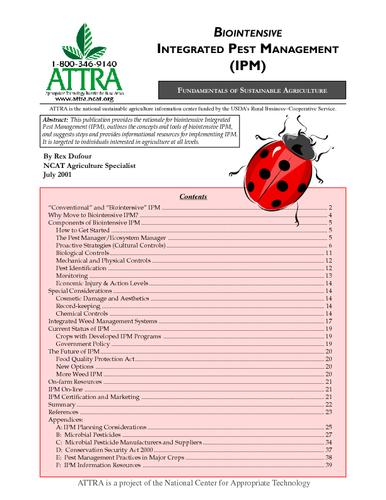
(IPM) in Alfonso Lista Ifugao, Philippines Chiemela F. Anyanwu Ifugao State University, Research and Development Office, Nayon, Lamut, Ifugao, Philippines Abstract: A survey study was carried out to assess the knowledge and awareness level in Integrated Pest Management (IPM) technology and concepts among corn farmers in Alfonso Lista in the Integrated pest management (IPM) is an environmentally friendly technology. IPM is a multifaceted approach to pest management that seeks to minimize negative impacts on the environment. This technique is an important step towards providing healthy, viable food for a growing global population. The focus of this study was to examine the impact of integrated pest management in a rice agroecosystem.
This paper discusses the impact of integrated pest management (IPM) technology on onion farmers in the Philippines. Onions are one of the most important vegetable crops in the Philippines, with pests representing a major production constraint.Overall, the paper finds that reduced pesticide use as a result of the onion IPM project resulted in health-related, environmental, and economic benefits (IPM) in Alfonso Lista Ifugao, Philippines Chiemela F. Anyanwu Ifugao State University, Research and Development Office, Nayon, Lamut, Ifugao, Philippines Abstract: A survey study was carried out to assess the knowledge and awareness level in Integrated Pest Management (IPM) technology and concepts among corn farmers in Alfonso Lista in the
6 The Farmers' Handbook, "Near The House - 1" Chapter 9 - Integrated Pest Management 7 3. Fencing Without a fence, many types of pest can get on to the land and damage crops. So a fence is very important. The most beneficial type of fence is a living or green fence, or hedge. management techniques, giving consideration to traditional factors such as input prices and production risk, then explicitly adding health effects of pesticides into the analysis. Prophylactic pesticide applications are compared with integrated pest management
This paper discusses the impact of integrated pest management (IPM) technology on onion farmers in the Philippines. Onions are one of the most important vegetable crops in the Philippines, with pests representing a major production constraint.Overall, the paper finds that reduced pesticide use as a result of the onion IPM project resulted in health-related, environmental, and economic benefits (IPM) in Alfonso Lista Ifugao, Philippines Chiemela F. Anyanwu Ifugao State University, Research and Development Office, Nayon, Lamut, Ifugao, Philippines Abstract: A survey study was carried out to assess the knowledge and awareness level in Integrated Pest Management (IPM) technology and concepts among corn farmers in Alfonso Lista in the
Director, Biological Pest Management, CABI Bioscience and Global IPM Facility. Like many tropical plantation crops, cocoa has a long tradition of over-dependence on chemical pesticides. But it has the distinction as well as being a birthplace of integrated pest Indonesia, Philippines and other countries with the assistance of FAO, the FFS Abstract: A survey study was carried out to assess the knowledge and awareness level in Integrated Pest Management (IPM) technology and concepts among corn farmers in Alfonso Lista in the Province of Ifugao Philippines. Fifteen barangays constituting
2018/11/08 · What is Integrated Pest Management (IPM)? Integrated Pest Management (IPM) is an ecosystem-based strategy that focuses on long-term prevention of pests or their damage through a combination of techniques such as biological control, habitat manipulation, modification of cultural practices, and use of resistant varieties. This article comprehensively examines the impact of integrated pest management‐farmer field school (IPM‐FFS) on yield, insecticide expenditures, labor expenditures, herbicide expenditures, fertilizer expenditures, and profit, based on data from onion producers in the Philippines.
This paper discusses the impact of integrated pest management (IPM) technology on onion farmers in the Philippines. Onions are one of the most important vegetable crops in the Philippines, with pests representing a major production constraint.Overall, the paper finds that reduced pesticide use as a result of the onion IPM project resulted in health-related, environmental, and economic benefits Bugbusters Integrated Pest Management IPM, Cagayan de Oro, Philippines. 2 likes. Management Service. Jump to. Sections of this page. Accessibility Help. Press alt + / to open this menu. Facebook. Email or Phone Posts about Bugbusters Integrated Pest Management IPM. Octubre Antipina Aisa is feeling sad with Jay-ar Saren Octobre at Bugbusters
The study was conducted to analyze farmers’ participation in the Integrated Pest Management (IPM) under the Palayamanan Program in three municipalities in Camarines Sur, Philippines, namely integrated pest management in rice pdf We conclude that pest management in tropical irrigated rice should be based on the. Extensive review of the role of biodiversity in rice pest management.and extreme caution should be used when controlling insects in rice fields which are near crawfish ponds. The first step in effective integrated pest
(IPM) in Alfonso Lista Ifugao, Philippines Chiemela F. Anyanwu Ifugao State University, Research and Development Office, Nayon, Lamut, Ifugao, Philippines Abstract: A survey study was carried out to assess the knowledge and awareness level in Integrated Pest Management (IPM) technology and concepts among corn farmers in Alfonso Lista in the Integrated Pest Management Collaborative Research Support Program (IPM CRSP) Annual Workplan for Year Ten (September 29, 2002 to September 28, 2003) Final Version – September 2002 Management Entity Office of International Research and Development (OIRD) Outreach Division – Office of the University Provost Virginia Tech 1060 Litton Reaves Hall
The study was conducted to analyze farmers’ participation in the Integrated Pest Management (IPM) under the Palayamanan Program in three municipalities in Camarines Sur, Philippines, namely (IPM) in Alfonso Lista Ifugao, Philippines Chiemela F. Anyanwu Ifugao State University, Research and Development Office, Nayon, Lamut, Ifugao, Philippines Abstract: A survey study was carried out to assess the knowledge and awareness level in Integrated Pest Management (IPM) technology and concepts among corn farmers in Alfonso Lista in the
Management of the Pest The Philippines employs Integrated Pest Management with emphasis on biological control and none use of pesticide against the Malayan Rice Black bug. Since the outbreaks in Mindanao, lesson learned that pesticide is not a good management option for the pest. Through the KASAKALIKASAN, the IPM Social Capital and Diffusion of Integrated Pest Management Technology: A Case Study in Central Luzon, Philippines1 Florencia G. Palis2, Stephen Morin 2, 3, and Mahabub Hossain2 Introduction Social capital is a concept that can be utilized in any delivery approaches for the efficient transfer of …
